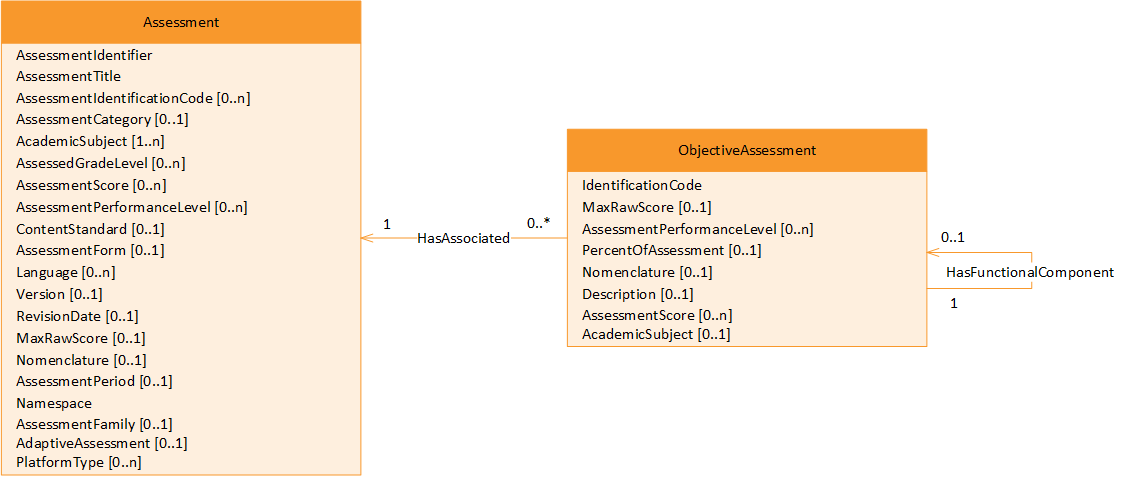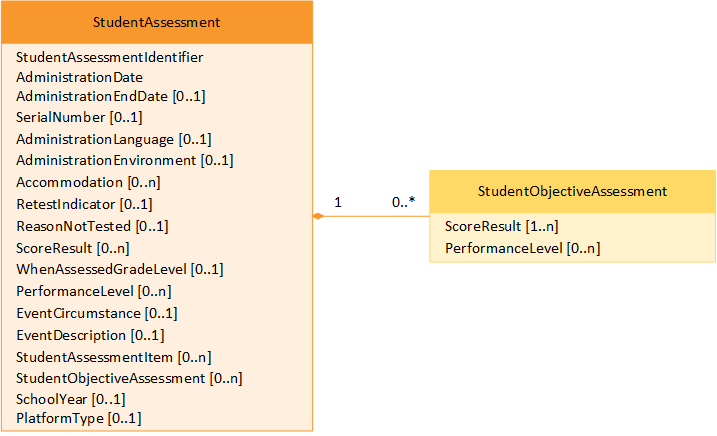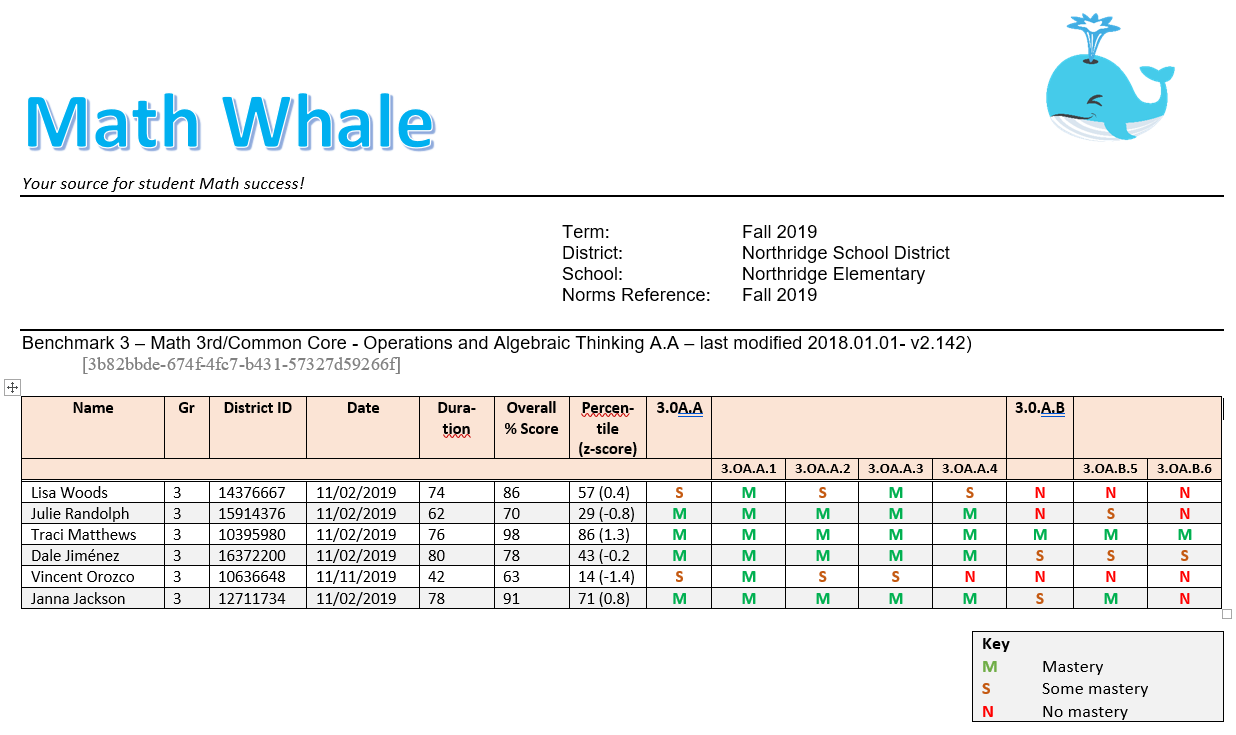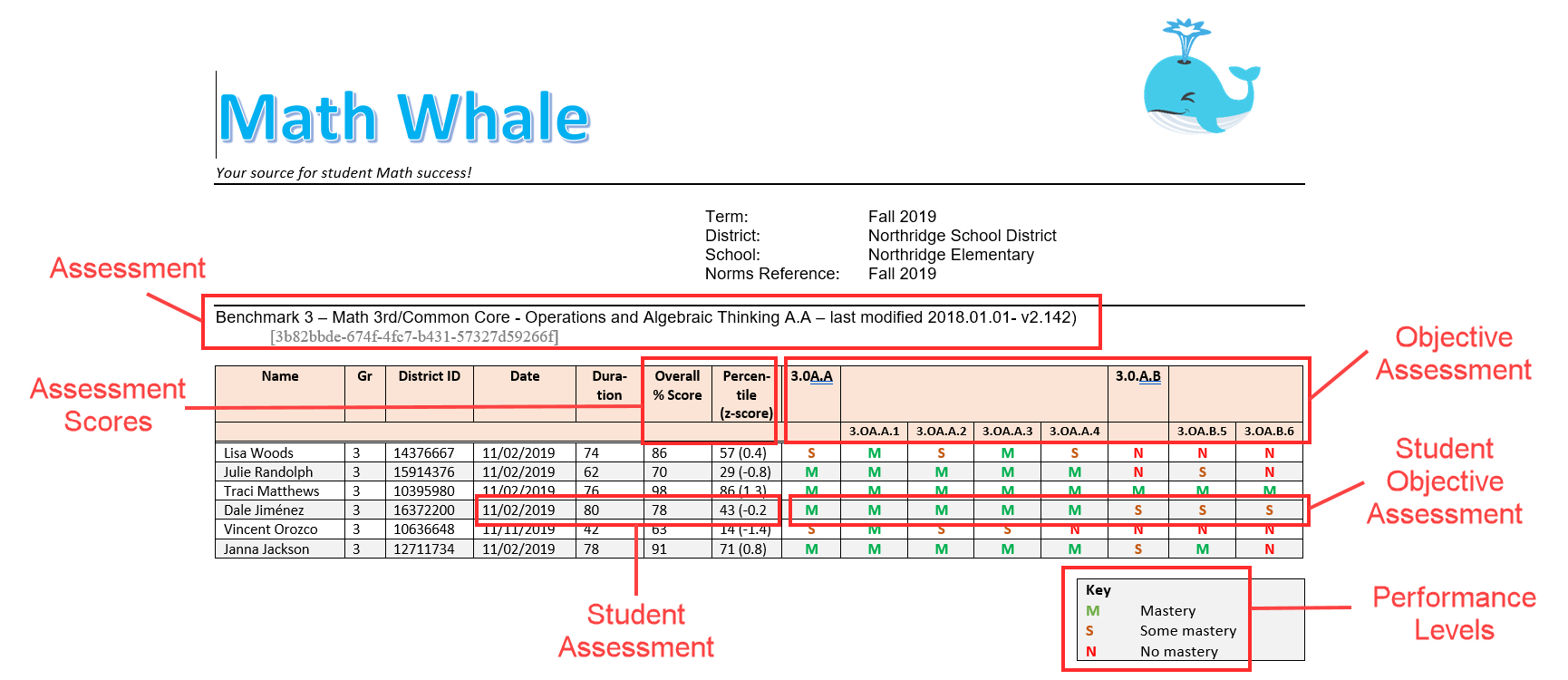Assessment Domain - Overview
Contents
Key Entities
This domain contains:
- An Assessment entity that describes assessments along with associated metadata.
- A LearningStandard entity that drives the curriculum and the assessments.
- A StudentAssessment entity that holds assessment results and administration metadata for an overall assessment, objective assessments, and individual assessment items.
Key Concepts
The key concepts include the following:
The overall domain is primarily designed to collect and exchange data that is useful in the interpretation of student assessment results at a classroom and building-level. The domain is therefore not designed to deliver on use cases such as:
- to recreate assessment instruments fully or provide for assessment or assessment item portability across systems
- to capture precise algorithmic or technical details of scoring systems
- to gather all data generated from a student's interaction with an assessment instrument.
- On this last point, note that there is some focus on gathering student inputs during the assessment process, but those are generally limited: the assumption is that a "replay" or more full account of student interactions (for example with a complex question or technology-enabled item) would be better accomplished by some facility on the host system and that therefore the focus is on providing for such linkages to other systems in these cases.
- The assessment model is flexible enough to convey results from complex tests such as the SAT and ACT exams, large tests such as state-level standardized tests, and simple tests such as classroom benchmark assessments or quizzes.
The LearningStandard entity models both a general representation of an abstract learning concept or skill and specific elements within the realm of an objective. The source and scope are defined by the Namespace and LearningStandardScope elements, respectively.
- The ObjectiveAssessment entity is a subset of items on an assessment that may have its own score, performance levels, or academic subject and that can be tied to learning standards.
Hierarchical Model
The Ed-Fi data model for assessments contains a number of entities and reference patterns. While its scope may make it a bit imposing to newcomers, understanding a few design principles enable it to be easily understood and adopted.
Assessment and ObjectiveAssessment Example
Many assessments are multi-tier in the sense that they provide multiple scores or result sets for each assessment. An example would be a single "reading" assessment that tested multiple skill areas, such as "Reading Comprehension," "Accuracy and Fluency," "Phonemic Awareness," and so forth.
In the Assessment domain, the top-level assessment is an Assessment entity and the skill areas are ObjectiveAssessment entities. This structure is recursive, so that there can be any number of levels of ObjectiveAssessments.

Once a student takes an assessment, the results can be modeled in the StudentAssessment entity and StudentObjectiveAssessment common type, each of which has references back to its parent or peer entities.

Support for Mapping to Local Learning Standards
Field implementation has shown that, while school systems will intake into their systems the results of student assessments in areas like "Reading Comprehension" (in other words, the ObjectiveAssessment entity with student results held in the StudentObjectiveAssessment entity), they also commonly need to map those "Reading Comprehension" results to learning benchmarks. The LearningStandard entity enables the ObjectiveAssessment to be mapped to an education standard. Further, the LearningStandard entity may be a locally defined benchmark or a formal, external learning standard, such as one provided by the state or Common Core State Standards.
The structure looks like this:

The source of the data is typically as follows:
| Ed-Fi Entity | ||
| ObjectiveAssessment | LearningStandard | |
| Who provides ("owns") the entity data? | The assessment provider | A third party |
| Example of a provider | "DIBELS" | "Common Core State Standards" |
Sample Mapping
For assessment vendors, it may be helpful to review a sample score report and see how the individual elements would map to the Ed-Fi Assessment model. The following is a fictitious math assessment score report, Math Whale followed by a breakdown of where we would expect the different data points to land within the Assessment model.
For assessment vendors, it may be helpful to review a sample score report and see how the individual elements would map to the Ed-Fi Assessment model. The following is a fictitious math assessment score report, Math Whale followed by a breakdown of where we would expect the different data points to land within the Assessment model. Additional information for Assessment Vendors can be found in the
A Sample Score Report
A typical classroom score report (for a fictitious provider) might look like this:

Figure 1: a sample score report (click to expand)
A mapping of the main elements might look like this (you will see a few new elements appear here):

Figure 2: mappings for sample score report (click to expand)
![]()
- Ed-Fi Unifying Data Model Handbook - v3.3
- Ed-Fi Unifying Data Model UML Diagrams (Visio format, on GitHub)